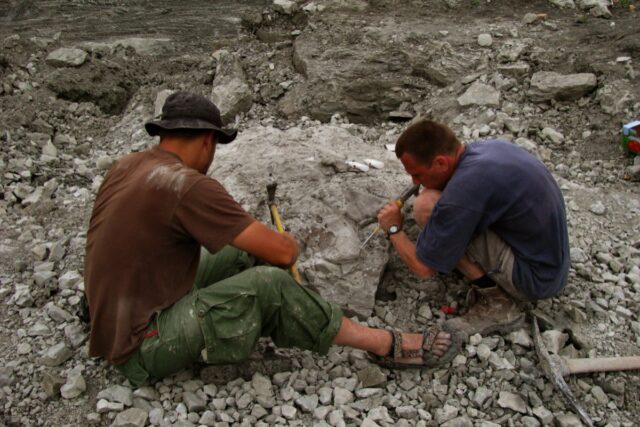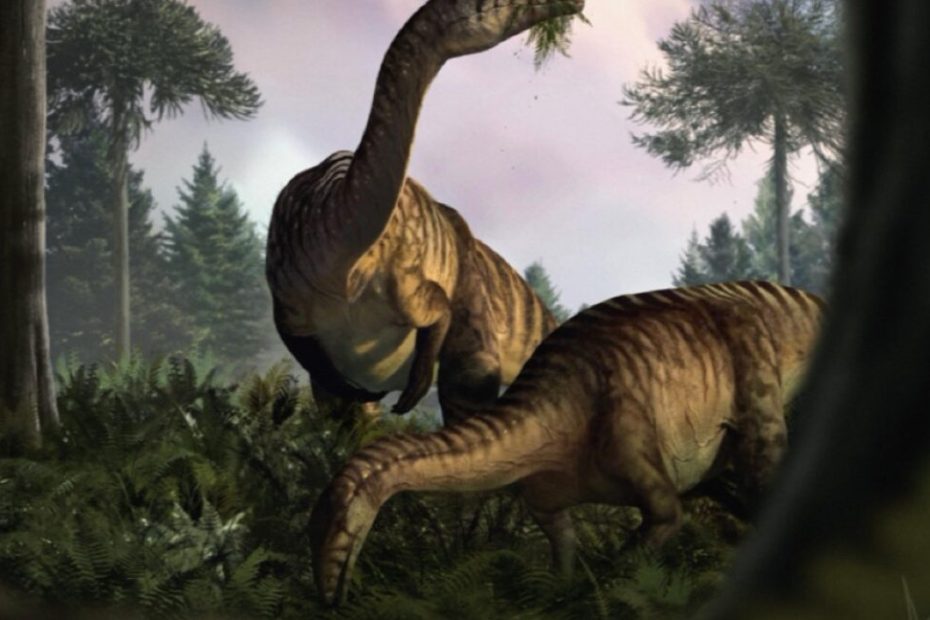Paleontologists have long wondered how dinosaurs – originally relatively small and of minor importance to the broader ecosystem – evolved into the dominant species some 30 million years later. Fossil feces and dinosaur vomit may hold important clues about how and why this evolutionary milestone came about, according to a new paper published in the journal Nature.
Co-author Martin Qvarnström, an evolutionary biologist at Uppsala University in Sweden, and his collaborators studied trace fossils known as bromalites, a designation that includes both coprolites and vomit or other fossilized material from an organism's digestive tract. As previously mentioned, coprolites are not quite the same as paleofeces, which contain many organic components that can be reconstituted and analyzed for chemical properties. Coprolites are fossils, so most organic components have been replaced by mineral deposits such as silicate and calcium carbonates.
For archaeologists eager to learn more about the health and diet of past populations—as well as how certain parasites evolved in the evolutionary history of the microbiome—coprolites and paleofeces can be a veritable gold mine of information. For example, in 2021 we reported on an analysis of preserved paleo poop that showed that ancient Iron Age miners in what is now Austria loved beer and blue cheese.
If a coprolite contains bone fragments, chances are the animal that excreted it was a carnivore, and tooth marks on those fragments can tell us something about how the animal ate its prey. The size and shape of coprolites can also provide useful insights. For example, if a coprolite is spiral-shaped, it may have been excreted by an ancient shark, as some modern fish (such as sharks) have spiral-shaped intestines.
A story about two models

Excavations at the Late Triassic site in Lisowice, Poland. The site yielded a large number of coprolites of predators and herbivores.
Credit: Krystian Balanda
Qvarnström et al. were keen to test two competing hypotheses about the dominance of the dinosaurs from the late Triassic (237 million to 201 million years ago) to the beginning of the Jurassic period between 201 million and 145 million years ago. “No single hypothesis appears able to fully explain the rise of dinosaurs, and critical questions about how dinosaurs established their dynasty on land remain largely unanswered,” the authors wrote of their research goals.
One hypothesis cites evolutionary competition – the traditional model of 'competitive replacement' – as a driving factor, making dinosaurs better equipped to survive thanks to superior physiology, anatomical adaptations and feeding habits. Alternatively, the 'opportunistic replacement model' suggests that the dinosaurs were better able to adapt to a rapidly changing environment caused by random processes – volcanic eruptions, climate change or other catastrophic events that led to the decline and/or extinction of other species.

